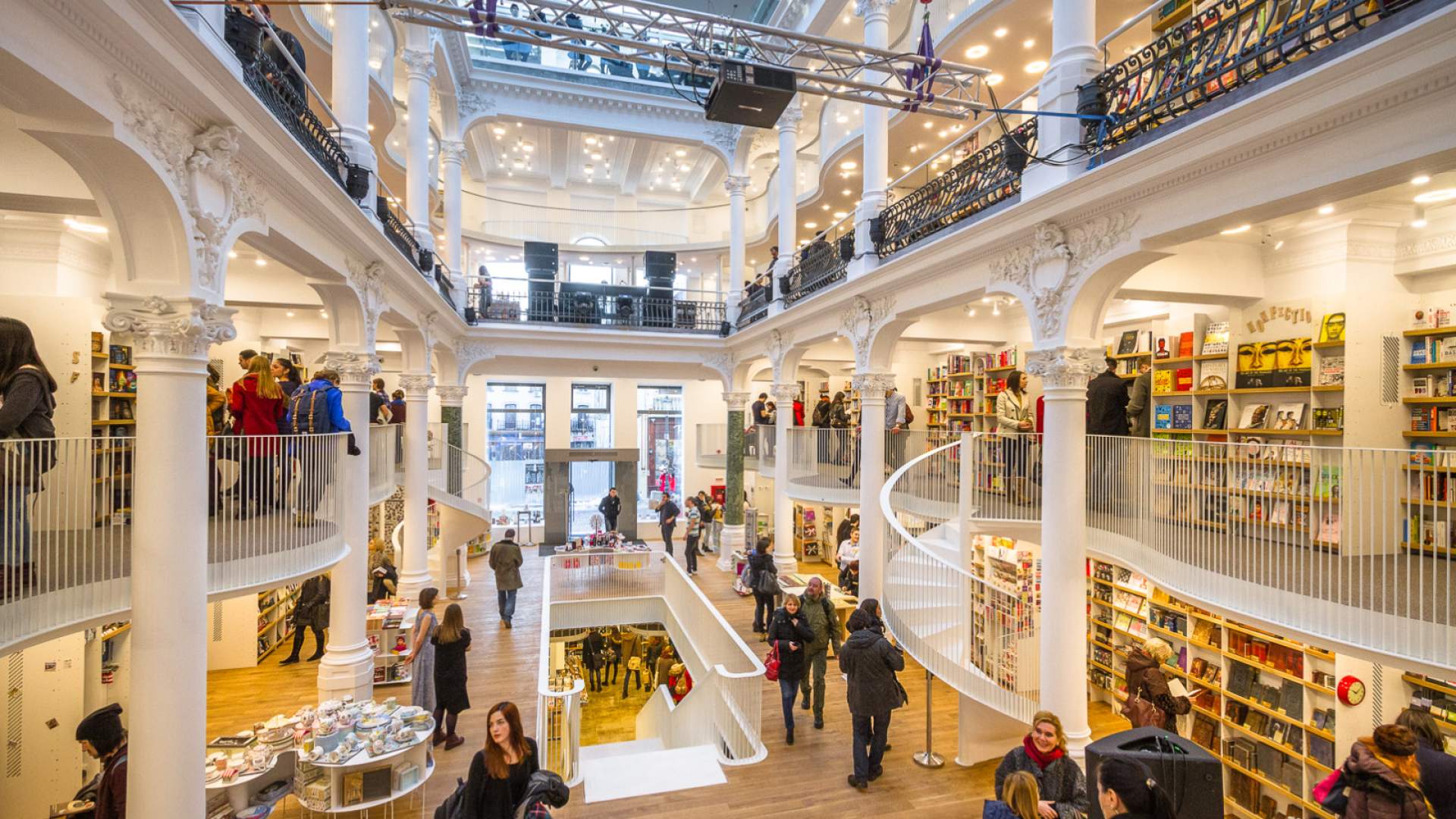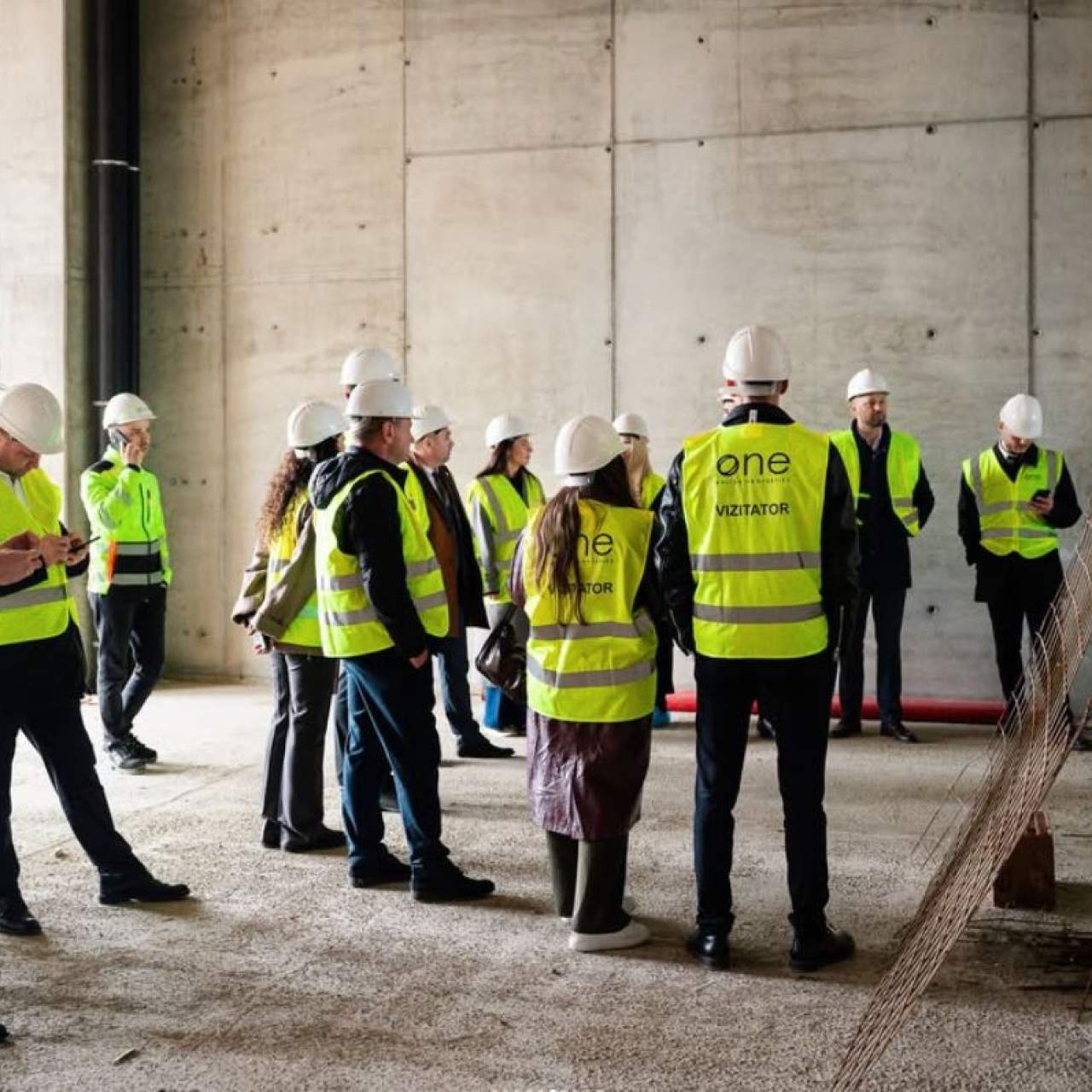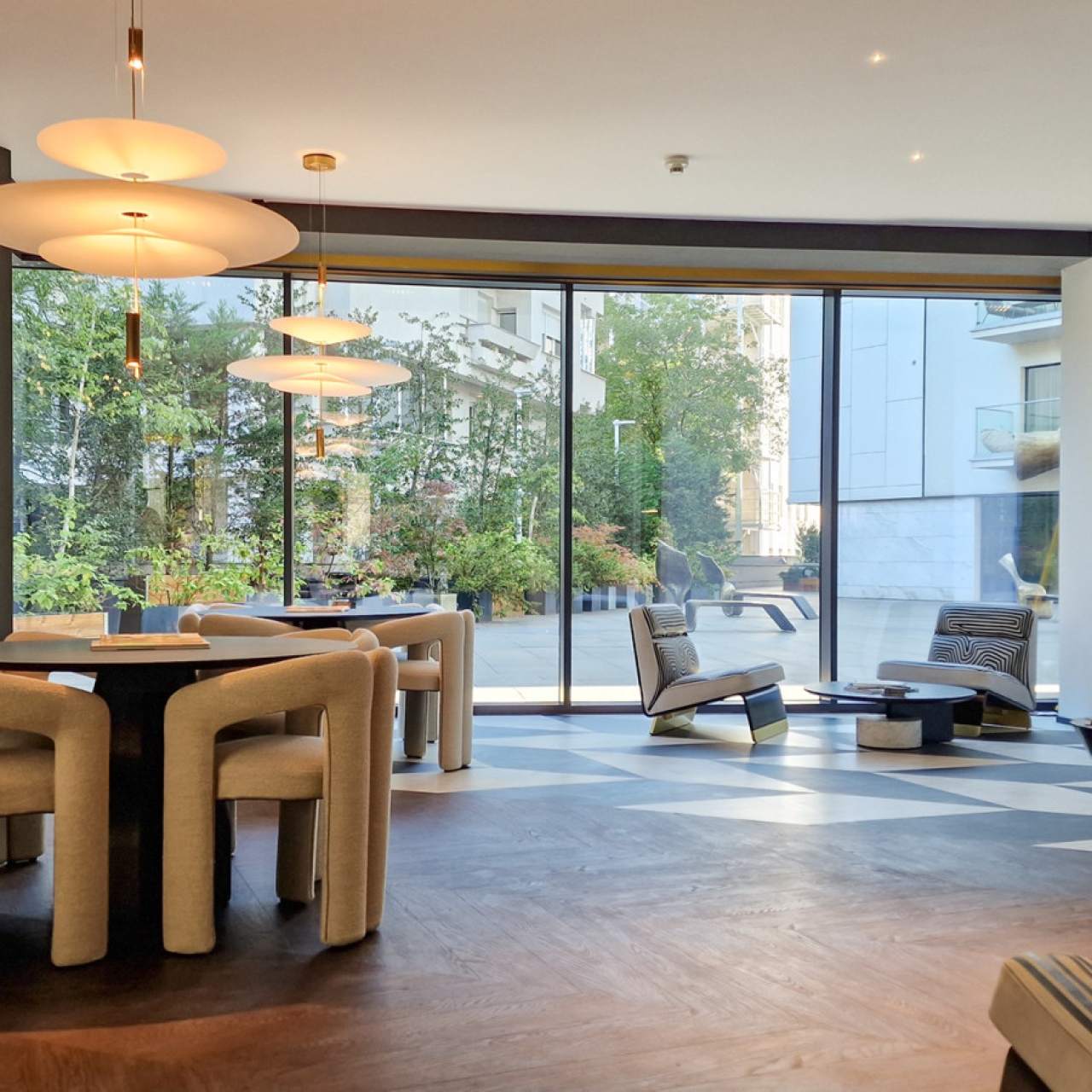
Literary escapes: Bucharest libraries and bookstores
Beside the weekend getaways on the city streets, Bucharest also offers many opportunities for literary escapes into the world of books. Whether traditional libraries or modern bookstores, the Romanian capital has several oases of reading that are worth exploring.
Academy Library
Founded by ruler Constantin Brâncoveanu in 1694, within the Sfântul Sava monastery, the Royal Academy of Bucharest was an important educational landmark of the country. And this is especially because, through its division, in 1864, by ruler Al. I. Cuza, both the "Saint Sava" National College and the University of Bucharest will be born. It is not such a surprise that the prestigious institution also benefited from a library to match. In 1761, an adjacent building was established next to the Academy, intended to house a library and a printing house. The first inventory of the library's volumes took place only at the end of the 18th century when the library was moved to the Sfântul Gheorghe Vechi monastery. Taken over, after 1821, by the College of Saint Sava, in 1833 it was named the national library of Romania, and five years later it was opened to the public. Among the librarians who administered it are August Treboniu Laurian and George Ioanid. Starting in 1864 – the time of the division – the institution was reorganized and named the Central Library of Bucharest. Disbanded in 1901, although a small collection was kept by the national college, a large part of its fund was transferred to the Library of the Romanian Academy. It had been inaugurated on August 1, 1867, and would hold, for a time, the status of a national library. After changing several premises, the institution currently operates with three buildings, a conference hall with a capacity of 220 seats, eight reading rooms, and an exhibition hall, designed by the architects Romeo Belea and Gh. Roșu.
Cărturești Carusel
Spread over an area of 1,000 square meters and covering over six levels, Cărturești Carusel was inaugurated in 2015. Except for the floors dedicated to around 10,000 volumes, the library also has a bistro, a multimedia space, and an art gallery. The building in Lipscani street dates from the 19th century and belonged to the Chrissoveloni banker family but was confiscated with the establishment of the communist regime, during which the Familia store operated here. After the fall of the totalitarian regime, the building returned to the possession of the family of the former owners, now in its fourth generation. Cărtureşti Verona, the largest bookstore in the country, is also remarkable.
National Library
Although in some instances its history is intertwined with other similar institutions, such as the Library of the Romanian Academy, the National Library of Romania, the country's largest specialized institution, was founded in 1955. It was initially called the Central State Library, taking its current name in 1989. Currently, BNaR comprises around 9,000,000 units, divided into Current Funds, a collection that includes Romanian and foreign publications, both books and newspapers/magazines, and Special Collections Funds, which include bibliophiles, manuscripts, old periodicals, prints, photographs, maps, audio-visuals, and the historical archive. While in the past it operated in the building of the Stock Exchange Palace, starting from 2012 the central headquarters of the library was moved to a building designed by the architect Eliodor Popa in the 80s but completed between 2009-2012.
Kyralina bookstore

The Kyralina bookstore is the only French bookstore in the city. It offers, among other things, foreign general literature, essays, comics, and art albums, as well as a room for children of all ages. The interior was designed by a local architecture studio, and the lighting fixtures were custom-made.
Library of Letters
The Library of Letters is the library opened within the Faculty of Letters of the University of Bucharest and has its origins at the end of the 19th century. Opened in 1892, in just three years the number of books grew from 3,162 to around 10,000. In the winter of 1928, the library was reorganized, under the guidance of librarian N. Georgescu-Tistu and the dean of the faculty, Professor Ioan Bianu. Among the personalities who contributed to expanding the library fund with volumes from their own collections are Titu Maiorescu, Al. Rosetti, and Ioan Bogdan. At the beginning of the 1990s, the library goes through a series of modernization works and becomes the first computerized branch within the Central University Library, in which it had been included in 1948. One of the most important architectural works on the premises of the institution is the Nicolae Georgescu-Tistu reading room, reopened in 2009 and included in the National Cultural Heritage. Currently, the library operates with two reading rooms that have a capacity of 86 seats and makes more than 120,000 volumes available to visitors.
Other notable places in the literary world of Bucharest are Seneca Anticafe, a bookstore-cafe where customers pay not for consumption, but for time, the Humanitas Kretzulescu bookstore, in which a musical floor was also set up, and the Metropolitan Library, which holds no less than 29 branches spread across the city.
Data for this article was obtained from bibnat.ro, litere.ro, carturesticarusel.ro, bibmet.ro, editiadedimineata.ro, b365.ro, zf.ro, wikipedia.org and anuarulsargetia.ro. Photo credit: Mihai Petre, CC BY-SA 4.0, via Wikimedia Commons
Inspired by the article?
Explore apartments in neighborhoods worth discovering:


